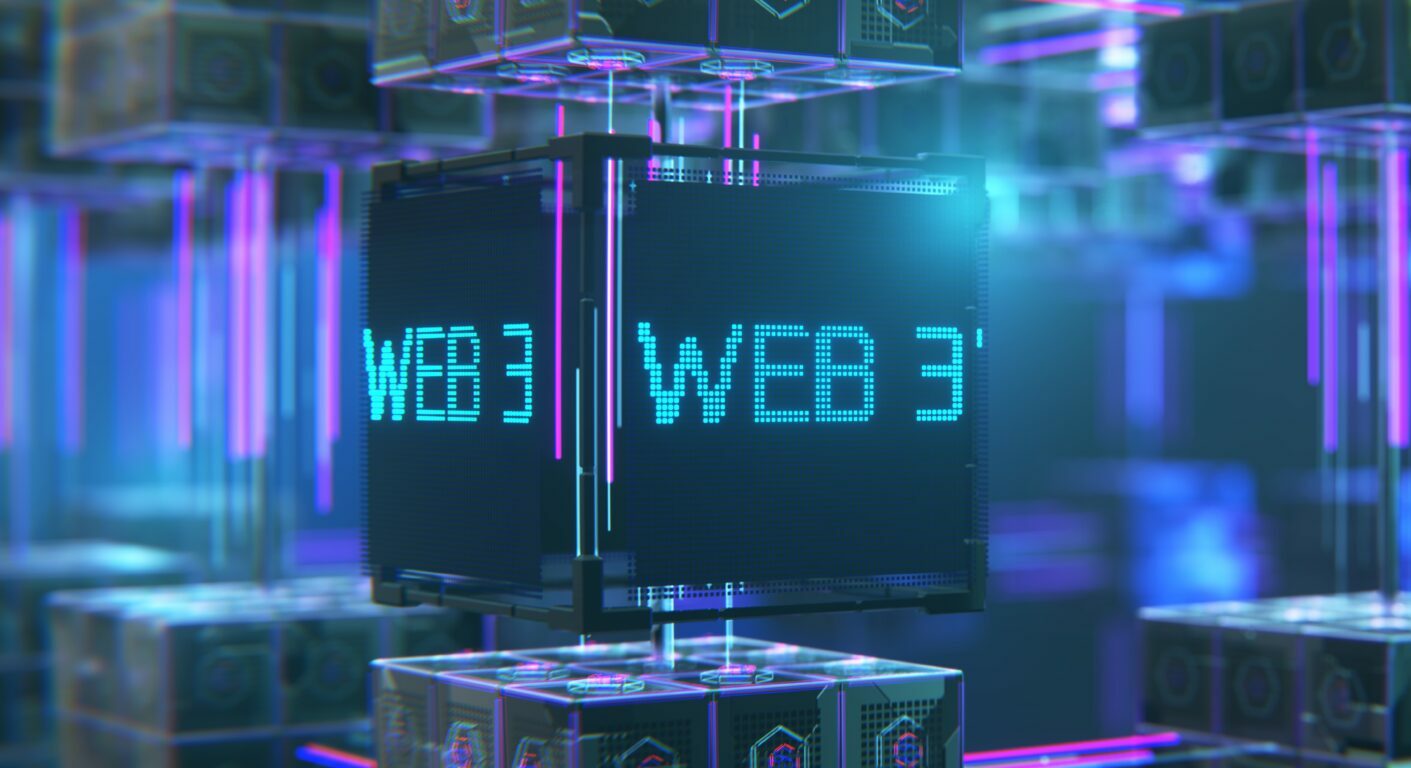Regardless of the state of crypto markets, blockchain technology isn’t going anywhere. Here’s a rundown of 10 blockchain trends for 2023.
Continue reading‘Dead Sorcerer’s City’ NFTs to be released by Lambda256
‘Dead Sorcerer’s City’ NFTs to be released by Lambda256
Lambda256, the blockchain company of Dunamu, announced on the 12th that it will launch a non-fungible token (NFT) project based on the Webtoon “Dead Sorcerer’s City” by Carnby Kim.
“Dead Sorcerer’s City” digital collectible NFTs are based on the Webtoon IP of the same name. For this project, the main characters from the story have been redesigned and produced using 3D technology. The collectibles are planned to be released on Lambda256’s NFT marketplace CYPHRLY, with details regarding upcoming launch dates and the issue quantity to be announced later in the CYPHRLY Discord community.
The first NFT character from the project will be the main character from the Webtoon called ‘Crimson Robe’ – with other characters being revealed later on. The Crimson Robe NFT will come with special utilities, including project membership roles for holders, as well as access to future game characters and Metaverse avatars.
“Dead Sorcerer’s City” will also branch out into other kinds of cultural content outside of NFTs. Currently, an animation series based on the IP is in production, aiming to target global online video (OTT) services such as Netflix. In addition, there are also plans to produce games and release collaborations with fashion brands using this IP.
Naver Webtoon is a major company in the global Webtoon market, ranking 1st in many countries around the world, including the United States and Japan.
Lambda256 x Shinhan Securities Initiate Proof-of-Concept to Promote STO Business
[Lambda256 x Shinhan Securities Initiate Proof-of-Concept to Promote STO Business]
Shinhan Securities announced on December 5th that together with blockchain solution company Lambda256, it will launch a Proof-of-Concept (PoC) to promote the security token (STO) platform business.
Through this platform business, Shinhan Securities plans to enable the tokenization of any underlying asset. Key plans include building blockchain infrastructure, designing digital wallets, issuing, subscribing, and distributing tokens, and linking them with existing financial systems, to internalize technology related to security tokens.
Security tokens refer to securities that are issued as tokens using blockchain technology. They lower the entry barrier for investors, by allowing them to divide ownership of diverse assets (fractional investments) such as real estate, art, and stocks. The advantages of this are a lower issuance cost than traditional securities and a lower risk than alternative digital assets that are based on real value.
Security token Proof-of-Concept is carried out by Shinhan Securities’ blockchain department and Dunamu’s blockchain-specialized subsidiary Lambda256. Lambda256 provides the blockchain platform Luniverse, complete with blockchain consulting for partnered companies, offering a total blockchain solution for diverse businesses that are making the transition into Web3.
Shinhan Securities plans to form a task force (TF) that will lead the development of a security token platform. Experts from diverse fields including product, deposits, payments, and legal affairs will use related systems and overseas case studies as a benchmark to design internal systems.
Furthermore, Shinhan Securities launched its blockchain division, a department dedicated to blockchain-related projects, in July 2022. Kim Jang-woo, head of the Digital Group at Shinhan Securities emphasized that: “We will continue to increase tests conducted with promising companies, to become leaders of new blockchain-based markets, such as security tokens.”
Source: CoinDesk Korea (http://www.coindeskkorea.com/news/articleView.html?idxno=82415)
Service Checklist for Successful NFT Deployment
Entering the NFT Market
Non-Fungible Tokens (NFTs) are unique digital assets that contain identification codes and Metadata to distinguish them from each other. For this reason, it is possible to attribute ownership of an NFT to a specific individual or entity. Furthermore, an NFT can leverage its uniqueness to provide owners with verifiability and record loyalty to a creator or brand. These are just a few of the reasons why the NFT market has expanded rapidly over recent years. According to the NFT Market Tracker, NFT trading volume was the most active in September 2021. In September 2021 alone, 5 million NFTs were traded, amounting to around 4.5 billion dollars. The number of transactions grew 100,000 times in comparison to September 2017, increasing by more than 1 million transactions.

However in 2022, NFT market growth slowed down significantly as a direct result of the “Crypto Winter”. Nevertheless, many experts remain positive about the potential of the NFT industry. They believe that the industry will expand and develop in a way that is far less influenced by the volume of NFT transactions. In fact, despite the Crypto Winter, many global brands and companies are currently making preparations to enter the NFT market.
So what factors should companies be considering when looking to enter the constantly evolving NFT market?
NFT Deployment Framework: Proposed by Lambda256
Lambda256 has guided numerous NFT success stories, and we believe that effective NFT deployment can be boiled down to three steps. The first step is to define the target NFT market. This is a process of identifying the industries to which a company belongs, and the relevant NFT markets for those fields. The second step is to mitigate risks by creating a pre-checklist for the NFT project. This checklist should be divided into business and technology aspects. Finally, the company needs to decide how they plan to use the blockchain. Let’s take a closer look at each step.
Step 1: Defining NFT Markets
NFT services can be largely divided into four categories: NFT Marketplaces, P2E NFTs, Intellectual Property sales, and authentication services. First, NFT Marketplaces are a type of intermediary service that allows NFT transactions to take place. The most representative examples include platforms such as Opensea or Solsea. Industries that are well-suited to this type of NFT service include retail and art companies: retail companies can consider NFT Marketplaces as an business expansion strategy, and art-related companies will find there is a wide network of people who can provide assistance in NFT publishing, making it easy for creators to sell their work on NFT marketplaces.
-Customers by Industry-
Retail
Art (eg. museums)
Game
Entertainment
Sports
Franchise
Finance
Energy
Real Estate | 1. NFT Marketplace (eg. Opensea) – (Definition) Art content distribution and sales service via NFTs – (Benefit) Expanding business with NFT Retail → Additional revenue |
2. P2E (eg. Axie Infinity) – (Definition) Deploying NFTs to issue and trade in-game items – (Benefit) User acquisition, transaction fee revenue | |
3. Intellectual Property Sales (eg. NBA Top Shot) – (Definition) Providing a service to users by publishing owned content as NFTs – (Benefit) Customer loyalty, NFT sales revenue | |
4. Authentication Service (eg. Authenticity Guarantee) – (Definition) Service that guarantees business-related certificates by issuing them as NFTs – (Benefit) Provides reliability to users |
Intellectual property sales refers to the services that create and deliver content owned by an enterprise into an NFT. Various types of content from across industries such as music and sports can be issued as NFTs and sold. In particular, companies that deal in industries with large numbers of fans can effectively leverage their fan base using NFTs, or use them for marketing and promotional purposes.
Finally there are authentication services, where NFTs are used as a guarantee of ownership for a particular entity. These can be useful when a company wants to guarantee authenticity of an item, or in industries such as real-estate, for dealing with registration guarantees.
Step 2: Pre-Checklist for NFT Deployment
If you have decided which NFT market you will target, it is important to create a pre-checklist to reduce any risk, and to make sure all aspects have been considered. This checklist can be divided into business and technology elements.
First of all, the most important factor to consider is exactly what kind of content will be published as NFTs. Then a company must explore all of the various legal issues that may be involved, and countermeasures for them, including potential issues regarding ownership transfer that occurs when NFTs are issued or traded. This also covers deciding the royalties to be paid to the original creator for each transaction. It is also worth noting that NFTs can be subject to financial regulation since they are tokens. Companies should also consider compliance issues that occur in the event of NFT transactions between countries, and pay careful attention to KYC & AML.
[Business Aspects]
NFT Targets | Legal Issues | ||
Author/Artist IP | Game items | Copyright transfer | AML |
Owned IP | Authentication certificate | Financial law | Royalty |
[Technology Aspects]
Media Storage | User Device | Bridge |
Local DB | Web | Ethereum |
CDN | Android | Supports Minting |
IPFS | iOS | Minting tool |
Support for NFT Transactions | |
Payment systems | NFT wallets |
In terms of technical aspects, a company must consider the NFT payment methods: will users be able to make purchases with digital assets or will traditional payment methods also be available? In addition, electronic wallets, bridges, and NFT minting tools should be understood as technical elements since they are based on blockchain technology. Finally, the way that NFT content is displayed will also affect how it is stored, as well as user device compatibility.
Step 3: Build NFTs with Luniverse
Once you have established a pre-checklist, you will be ready to build your own NFT service. This means you will now have to consider which blockchain platform to use. Let us tell you why Luniverse is the best option for delivering NFT services. First of all, specialized technology called TX-Pipeline can handle large-scale NFT-generated transactions, so there is no risk of losing any transaction data. Thanks to this technology, our blockchain boasts excellent stability in terms of service delivery. We also provide minting tools to help you easily issue NFTs, even without knowledge of coding. Finally, Luniverse provides bridge technology that allows NFTs to be transferred across various blockchains and ecosystems.

Luniverse NFT
As an all-encompassing NFT service platform, Luniverse is leading the ecosystem expansion and aiding in the popularization of blockchain – allowing anyone to easily carry out NFT projects by opening an accessible gateway to blockchain technology. Curious about Luniverse NFT? To set up at consultation, contact us at support@lambda256.io.
Don’t forget to keep up to date with Luniverse and discuss the latest NFT news via the Luniverse Discord community!




